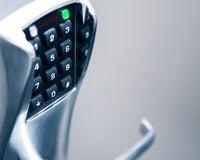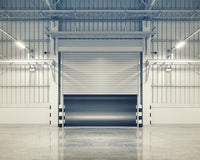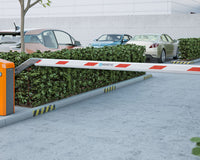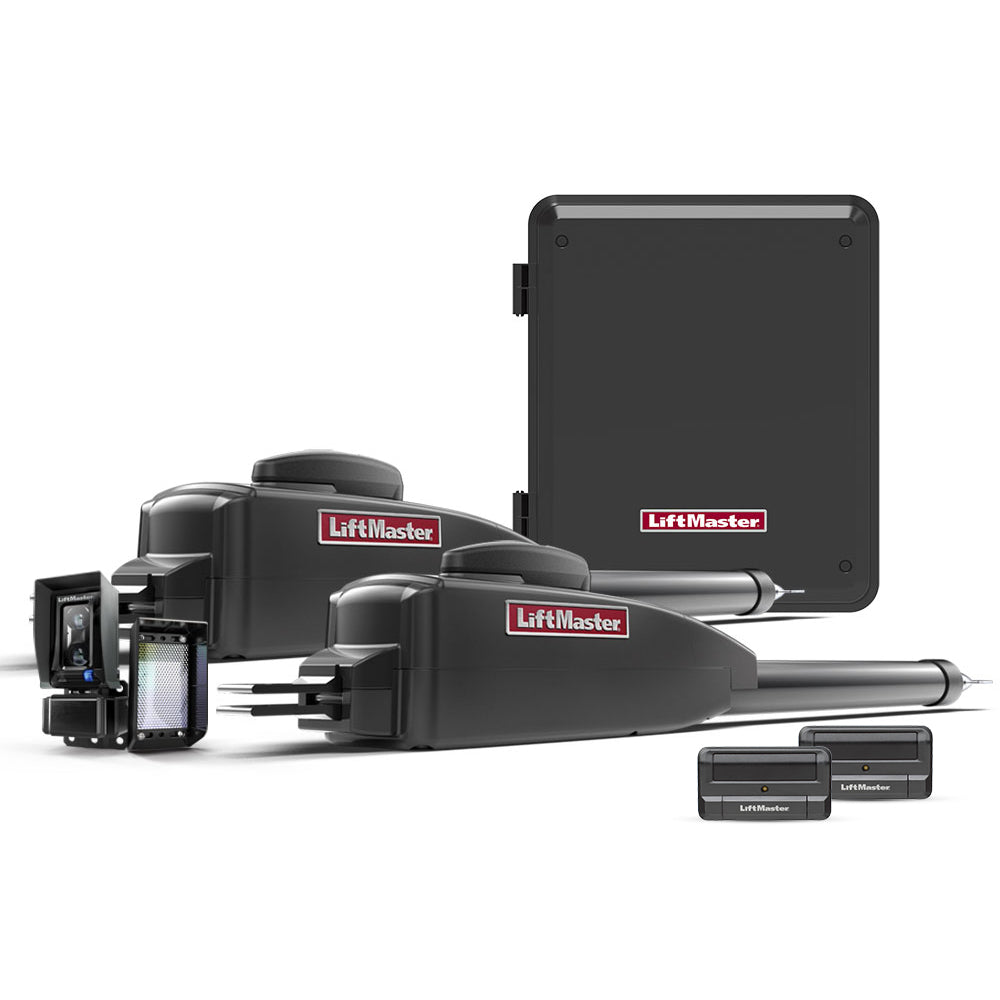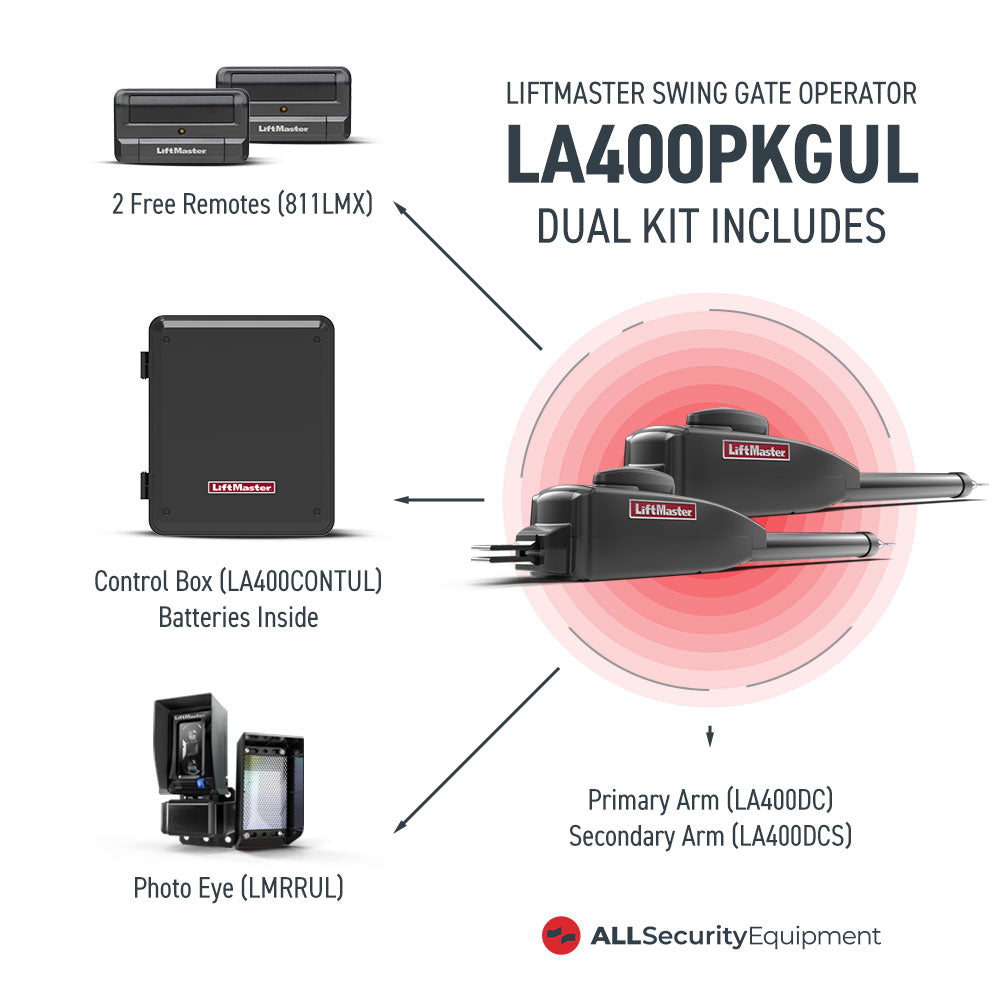Barrier gates are easy to set up and maintain, offering a low-cost option for traffic control, entry restriction, and conducting any necessary checks. The gate arm is its most critical part because it blocks movement, which is the whole point. The rest of the setup supports the gate arm. Because it moves a lot, it’s exposed to wear and tear from cars, walls, and mechanical impact and may need to be replaced at some point.
We have compiled a list of everything our experts feel you need to know so that when the time comes, choosing the right replacement arm for your barrier gate will be a walk in the park. We shall walk you through the different types of barrier gate arms, the variables you should be looking out for, and where they are applicable so you can make an informed decision.
What You Should Know About Barrier Gate Arms Before Replacement
Different Barrier Gate Arm Designs
The goal behind the design should be providing simple functionality while maintaining safety and the ability to handle heavy traffic. There are 3 common gate arm styles that you can choose from:
1. Standard Straight Arm Barriers
These are simple, sustainable tools that control traffic and keep your business and residential areas secure. Standard straight arm barriers, like the LiftMaster 15 Ft Round Barrier Arm, are great for buildings with no vertical clearance requirements as they can go all the way up to grant passage to vehicles.
2. Folding Gate Arms
These are flexible with their horizontal coverage and can be applied where low vertical clearances are required because they fold completely out of the way.
Folding gate arms, like the Magnetic Autocontrol Articulated VarioBoom Complete, are also more stable than straight arms for a long distance. They bring the weight closer to the pivot, reducing the chances of the arm's weight overpowering the base. The design also ensures the barrier arm doesn’t hit the roof or ceiling of your building or parking lot.
3. Wishbone Barrier Gate Arms
These barrier gates have forked dual hands hinged to the pivot support, like the Linear SG-TB 1/2 HP Barrier Gate with Wishbone Arm. The two arms provide extra stability and allow you to extend the gates further than your standard barrier arms.
Barrier Gate Arm Material
Your ideal barrier gate arm uses resilient materials and finishes, which can be depended on to maintain a professional appearance despite daily use in high traffic areas. Common options for barrier gate arm replacements include aluminum, aluminum alloys, steel poles, and PVC. You may still see the almost-extinct wooden gate arm.
Aluminum and Steel Gate Arms
Many security experts promote these materials due to their durability and ability to endure powerful impact forces. Aluminum’s rigidity makes it the most appropriate for long arm lengths. It won’t start bending, and it is not too heavy for the barrier gate operator motor. This is a bonus for high-traffic areas as you can cover multiple lanes or longer distances.
PVC Gate Arms
These are lightweight options that are also rigid, although they are more susceptible to damage from vehicle collisions. The silver lining to this is they are less likely to damage automobiles and cause milder injury than aluminum and steel. Their lightweight also makes PVC gate arms ideal for high-traffic areas. They can move at high speeds without straining the controls.
They are also pocket-friendly at approximately 80% the price of similar aluminum arms because the material is easier to extract, and their lightweight translates to lower freight costs. PVC arms are also sustainable from a reusability perspective; they wear off by creasing at the gate bracket. You can trim this bit and use the same pole for a shorter barrier gate.
Wooden Gate Arms
Although they were the original barrier gate material, their popularity took a hit with advanced technology eliminating their advantages over other materials.
PVC is, by nature, lightweight and requires less maintenance than bulky wood. Aluminum and metal are now popular as circular, square or rectangular tubes instead of solid poles, which reduces their weight significantly. They are also more manageable than wood; besides being bulky, wood is susceptible to wear and tear from environmental agents like rain and extreme heat.
Traditional wood barriers are also easily driven through by defiant drivers, so they can’t make up for their shortcomings with strength. The budget savings will have to be extraordinarily high to justify opting for a wooden gate arm, and even then, subsequent replacements and maintenance costs will undo the gains.

Gate Arm Direction
The basic manual arm moves in one direction, either left or right. The other side usually has a fitted counterweight, which you should give an allowance to move up and down as the barrier raises and lowers.
Automated barrier gate operators can swing the arm left or right, depending on the design and because they use motors to manipulate the arm. Some are unidirectional and can even be set to swing on both sides, enabling you to use the same arm to control both incoming and outgoing traffic.
It is quite easy to overlook this feature amidst all the other qualities you are looking at, and you may end up with a great barrier gate arm replacement that you can’t use because it doesn’t suit your setup. Be vigilant to ensure they move in the right direction for your needs.
The Length of the Barrier Gate Arm
Your typical gate arm is usually between 10 and 20 feet long. This length can and often is extended to accommodate specific needs; some heavy-duty barrier arms extend over 30 feet. The appropriate size will depend on the width of the traffic lane and the number of lanes to be covered.
It is important to mention that the gate arm doesn’t have to cover the entire lane. It functions just as well to control traffic if it is long enough to prevent vehicles from entering or exiting a controlled area.
Round Shape Versus Square Versus Rectangular Gate Arms
Round-shaped arms, like the LiftMaster 12 Ft Round Barrier Arm, are strong and rigid as the strength is evenly distributed in all directions, giving them better structural integrity than their square or rectangular counterparts. They, therefore, have a higher projected service life. They are also lighter by approximately 20%, meaning they are a smaller burden to the gate operator, so you can make longer arms without worrying about overloading the system.
Although they can’t hold as much weight as round tubes, square and rectangular arms are easier to cut and will function just as well for short to regular size barriers (which is usually all you need). They are also more pocket-friendly and ideal for short-term use.
Your choice should be influenced by the purpose of the barrier gate, as this affects the length, sturdiness, and durability required to optimize the resources thrown into the project.

Crash Rated Barrier Arms
These special barrier arms can stop a heavy vehicle from driving at high speeds. They are used in high-security areas and have different K and M ratings based on their impact resistance levels. These standards consider the weight of the approaching vehicle and their projected speed at the point of impact and are set by the United States State Department.
Their popularity has increased with each terrorist attack as concerned parties seek to secure their premises.
Power Source
The barrier gate arm needs to be powered and requires access to the grid. You need to factor in the power source and how you will do the wiring as you compare options. Having a battery-powered backup, an additional battery pack or solar power compatibility is a bonus as you will be able to maintain the facility or residence parking during a power failure.
Maintenance
Your ideal replacement barrier gate arm can bear the elements without demanding maintenance. It is waterproof, corrosion-resistant, and includes anti-crush features or can be fitted with them. It is also easy to install and operate without many parts that need regular monitoring.
Extra Bells and Whistles
Extra features range from advanced options like radio control, Near Field Communication (NFC) card operation, and photoelectric (PE) safety beams to simple ones like loop detectors, reflective stickers, or flashing safety lights. The more you can get from your choice of barrier gate, the better value you get for your money.
Unfortunately, some complex parts and accessories come at a premium. You should weigh their benefits against your needs and budget to see if their impact is worth the extra penny demanded.
Safety Concerns
Injuries are often the result of deferred maintenance and/or inadequate attention to detail. You need to ensure the swinging arms are restrained at all times and any damaged restraining mechanism is repaired or replaced. There have been many injuries from unrestrained pivoting barrier arms; there are even reported cases of fatalities after heavy gate arms punctured windshields and got to the occupants of vehicles.
Regular checkups are necessary because sometimes dangerous situations do not occur due to wear and tear, vandalism, and children playing with the gate arms often contribute to the poor shape of your barrier gate arm. In some cases, the operator does not recognize the danger when the barrier is newly installed or the installation is done poorly, so there are inappropriate or missing devices.
A barrier gate arm should be easy to install and secure; you should leave an allowance for retrofitting with safety mechanisms if the need arises. The edges should be treated with foam or another padding to mitigate auto damage, or you can select arms made from low-impact material like lightweight PVC.
Newly installed barrier arms also cause injuries when no warnings are placed after installation, which turns them into dangerous booby traps. Sometimes they are invisible due to their small profile, or their color is blending into the background. The gate arm should be painted or taped with reflective markings to make them stand out. If you can find one that is already bright, it will save you the trouble. Warning signs should be placed with sufficient distance for the driver or pedestrian to react before getting to the barrier.

Original Equipment Manufacturer (OEM) Vs Original Design Manufacturer (ODM)
OEM gate arms are based strictly on designs from the barrier gate operator’s manufacturer and produced by the same manufacturer or a third party contracted by the manufacturer to produce them on their behalf. They are, therefore, guaranteed to be compatible with your existing system, and you can avoid unintentionally voiding any existing warranty because of unauthorized parts. Their features and designs are as unique as the designers are creative.
ODM arms, on the other hand, are generic. Manufacturers use modular measurements and designs, so the arms can fit in most systems. This use limits the level of creativity designers can use, so they will be basic but functional. Because they need less research and development and are produced in mass, ODM barrier gate arms are usually cheaper to manufacture, making them more pocket-friendly than OEM arms. They will come in different brands and colors but are compatible with many barrier gate operators.
Choosing between OEM and ODM manufactured gate arms will come down to your existing resources, the arm's compatibility with your existing infrastructure, and the purpose of the barrier.
Why You Need a Working Barrier Gate
Barrier gates are also known as boom barriers or boom gates and are used to block vehicle or pedestrian access through controlled points for different purposes.
You will find them at level crossings, drawbridges, checkpoints, and entrances to restricted areas. They also function as toll gates to manage traffic through toll booths. These gates manage the access of emergency services by allowing authorized vehicles, like ambulances, fire engines, and other emergency response vehicles, to use designated routes. In some cities, they are even used to prevent jaywalking.
On a private and domestic level, you are likely to see one of these barriers in a parking garage or parking lot, and they are often incorporated with billing and parking restrictions to complete parking systems. This shows we are all susceptible to the effects of a faulty barrier gate arm and could use the information in this article.


